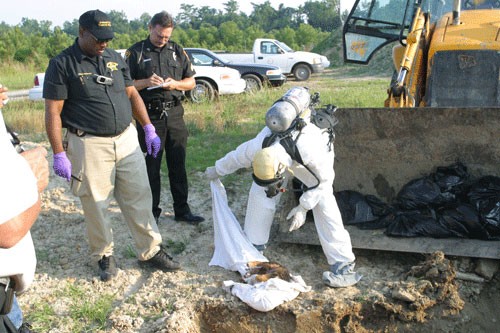People for the Ethical Treatment of Animals (PETA) is often seen as a champion for animal rights, but a closer look at their actions and statements reveals a more complex and controversial perspective, especially when it comes to pet ownership. The central question arises: Does Peta Believe In Pets? The answer, surprisingly, is nuanced and deeply rooted in their radical animal liberation philosophy. This article delves into PETA’s stance, exploring their controversial history of euthanizing animals and their ultimate vision for the human-animal bond.
Ingrid Newkirk and PETA’s View on Pet Ownership
PETA’s co-founder and president, Ingrid Newkirk, has made several statements that clearly illustrate the organization’s position on pets. She has described pet ownership as “an abysmal situation,” indicating a fundamental disapproval of the practice. Expanding on this, Newkirk has stated, “In the end, I think it would be lovely if we stopped this whole notion of pets altogether.” These quotes reveal a desire to abolish pet ownership entirely, viewing it as inherently problematic. Newkirk’s perspective suggests that the human-pet bond, which many consider enriching and beneficial, is seen by PETA as exploitative and ultimately undesirable.
This viewpoint is further reinforced by Newkirk’s assertion: “If people want toys, they should buy inanimate objects. If they want companionship, they should seek it with their own kind.” This statement starkly contrasts the common understanding of pets as companions and family members, reducing them instead to mere objects of human desire.
The Shocking Reality of PETA’s Euthanasia Practices
Perhaps the most disturbing aspect of PETA’s stance on pets is their high rate of animal euthanasia. Despite presenting themselves as an animal rights organization, PETA has a documented history of euthanizing thousands of animals each year. Records from the Virginia Department of Agriculture and Consumer Services (VDACS) reveal alarming statistics about the animals taken into PETA’s “shelter.”
For years, VDACS reports have meticulously tracked the intake and outcome of animals at Virginia shelters, including PETA’s facility. These reports categorize animals as reclaimed by owners, adopted, transferred, deceased from natural causes, euthanized, or held at year-end. By analyzing these figures, particularly the number of animals euthanized compared to those adopted or transferred, a stark picture emerges.
The table below summarizes PETA’s reported intake and euthanasia rates for dogs and cats over several years, based on VDACS data:
| Year | Received † | Transferred | Adopted | Killed |
|---|---|---|---|---|
| 2024 | 3,259 | 463 | 45 | 2,174 |
| 2023 | 3,136 | 621 | 38 | 2,471 |
| 2022 | 2,828 | 663 | 58 | 2,092 |
| 2021 | 2,355 | 623 | 27 | 1,699 |
| 2020 | 2,595 | 836 | 33 | 1,719 |
| 2019 | 2,421 | 807 | 29 | 1,578 |
| 2018 | 2,470 | 658 | 35 | 1,771 |
| 2017 | 2,445 | 585 | 44 | 1,809 |
| 2016 | 1,963 | 488 | 57 | 1,411 |
| 2015 | 1,974 | 446 | 60 | 1,456 |
| 2014 | 2,631 | 252 | 39 | 2,324 |
| 2013 | 2,175 | 311 | 46 | 1,792 |
| 2012 | 1,843 | 130 | 19 | 1,647 |
| 2011 | 1,992 | 34 | 24 | 1,911 |
| 2010 | 2,345 | 63 | 44 | 2,200 |
| 2009 | 2,366 | 31 | 8 | 2,301 |
| 2008 | 2,216 | 34 | 7 | 2,124 |
| 2007 | 1,997 | 35 | 17 | 1,815 |
| 2006 | 3,061 | 46 | 12 | 2,981 |
| 2005 | 2,165 | 69 | 146 | 1,946 |
| 2004 | 2,655 | 1 | 361 | 2,278 |
| 2003 | 2,224 | 1 | 312 | 1,911 |
| 2002 | 2,680 | 2 | 382 | 2,298 |
| 2001 | 2,685 | 14 | 703 | 1,944 |
| 2000 | 2,681 | 28 | 624 | 2,029 |
| 1999 | 1,805 | 91 | 386 | 1,328 |
| 1998* | 943 | 125 | 133 | 685 |
| Total | 60,651 | 6,994 | 3,644 | 49,520 |



* figures represent the second half of 1998 only † Other than spay/neuter animals
These figures reveal a consistently high euthanasia rate, often exceeding 70% and in some years reaching over 90% of animals taken in. The number of animals adopted out is strikingly low compared to the number euthanized, raising serious questions about PETA’s operational priorities and whether PETA truly believes in pets living happy lives in homes.
Inside PETA’s “Shelter”: An Euthanasia Clinic in Disguise?
Further investigation into PETA’s animal shelter in Virginia paints an even more concerning picture. A 2010 inspection by VDACS investigator Dr. Daniel Kovich was prompted by a complaint from a Virginia resident who was told by PETA that they did not operate an animal shelter. Dr. Kovich’s inspection revealed that PETA’s facility, located within their headquarters, lacked sufficient enclosures for the number of animals they reported taking in annually.
Image alt text: A “death kit” containing syringes and euthanasia solution, allegedly used by PETA, highlighting the organization’s controversial euthanasia practices.
Reviewing two months of records, Dr. Kovich discovered that a staggering 84% of animals taken into PETA’s custody were euthanized within 24 hours. Only a tiny fraction were adopted or placed in foster care. His report concluded that PETA’s facility did not operate as a genuine animal shelter focused on finding permanent homes, but rather functioned more like an “euthanasia clinic.” This reinforces the question of does PETA believe in pets in the conventional sense, or do they prioritize a radical animal rights agenda above individual animal welfare?
PETA’s Dubious Defenses and Controversial Incidents
PETA often defends its high euthanasia rates by claiming they primarily take in animals that are too sick, injured, or aggressive to be adopted. However, evidence and testimonies contradict this claim.
In a disturbing incident reported by WAVY-TV in 2014, PETA employees were accused of stealing a healthy Chihuahua named Maya from her family’s porch in broad daylight. Surveillance footage captured a PETA van arriving, a worker taking the dog, and driving away. The family reported that PETA later returned with a fruit basket and the devastating news that Maya had been euthanized. This incident led to larceny charges against the PETA employees and a lawsuit against the organization.
Image alt text: PETA employees in hazmat suits, possibly related to animal euthanasia procedures, raising concerns about their methods and priorities.
Furthermore, a 2007 trial in North Carolina revealed that two PETA employees were caught dumping bags of dead animals in a dumpster. Evidence presented at the trial indicated that PETA euthanized animals described as “adorable” and “perfectly adoptable.” Shelter personnel also testified that they believed PETA would find homes for the animals they entrusted to them, only to discover that the animals were euthanized shortly after being taken by PETA. These cases cast serious doubt on PETA’s claim that they only euthanize unadoptable animals, further fueling the debate about does PETA believe in pets as companions deserving of life.
Facing Legal Repercussions: The Maya Lawsuit
The tragic case of Maya the Chihuahua led to a significant lawsuit against PETA. Wilber Zarate, Maya’s owner, filed a $9.7 million lawsuit alleging that PETA employees lured his dog off his porch and euthanized her within hours, violating the legally required waiting period. The lawsuit detailed the family’s distress, particularly Mr. Zarate’s daughter, who suffered emotional trauma after Maya’s death.
PETA ultimately settled the lawsuit for $50,000 and was fined by the state of Virginia for euthanizing Maya prematurely. This legal battle highlights the real-world consequences of PETA’s euthanasia practices and the emotional toll they take on pet owners and animal lovers, reinforcing the question of does PETA truly believe in pets and the human-animal bond.
PETA’s Broader Agenda: Beyond “Ethical Treatment”
PETA’s actions and statements extend beyond euthanasia and pet ownership, revealing a radical animal liberation agenda that questions fundamental aspects of human-animal interaction. Their tactics often involve controversial and extreme methods, including targeting children with graphic propaganda and associating with extremist groups.
PETA has a history of employing provocative campaigns, such as distributing comics to children titled “Your Mommy Kills Animals,” aiming to emotionally manipulate adults through their children. These tactics have been widely criticized as insensitive and harmful, particularly to children.
Image alt text: Rod Coronado, an arsonist who received grants from PETA, illustrating PETA’s controversial connections to extremist individuals and groups.
Furthermore, PETA has been linked to violent extremist groups and individuals. They have provided grants to convicted arsonist Rodney Coronado and the Earth Liberation Front. Former PETA officials have made statements seemingly condoning violence in the name of animal liberation. These connections raise concerns about the radical nature of PETA’s agenda and their willingness to employ extreme measures to achieve their goals.
Ingrid Newkirk herself is a staunch advocate for radical animal liberation, having been arrested multiple times and expressing support for the Animal Liberation Front, a group associated with violent actions. Her book, “Free the Animals!,” further illustrates her alignment with radical animal rights ideologies.
Conclusion: PETA’s Complex Relationship with Pets
So, does PETA believe in pets? Based on their statements, actions, and documented practices, it’s clear that PETA’s view on pets is far from the conventional understanding. While they advocate for “ethical treatment,” their ultimate goal appears to be the abolition of pet ownership altogether. Their high euthanasia rates, controversial defense tactics, and radical animal liberation agenda paint a picture of an organization that does not truly believe in the human-pet bond as a positive and mutually beneficial relationship.
Instead, PETA seems to view pets as victims of human exploitation within a system they fundamentally oppose. While animal welfare is undoubtedly important, PETA’s approach raises serious ethical questions about their methods and their ultimate vision for the future of animals in our society. It is crucial for animal lovers and pet owners to understand PETA’s true stance and consider whether their radical agenda aligns with a genuine desire for animal well-being.
Learn More: Explore further information and stay updated on PETA’s actions at pets.edu.vn/blog.
